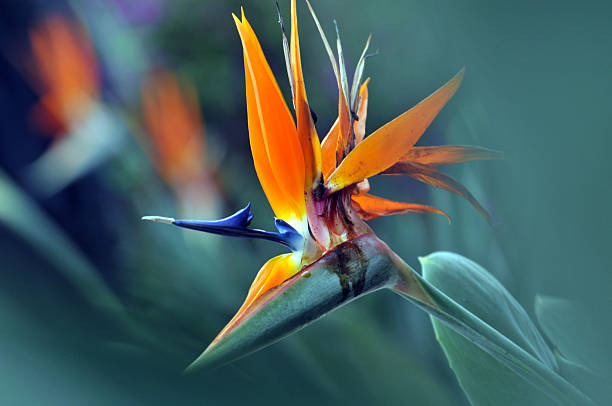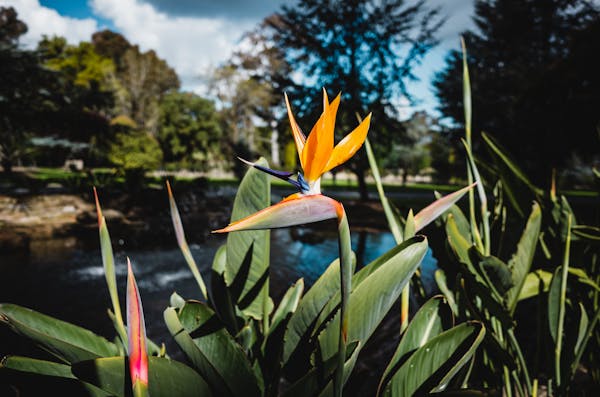Bird of Paradise Root Rot (Signs, Causes, And Treatment)
Hey folks, Here is another guide for you that will for sure help you in knowing more about the Bird of Paradise Root Rot problems, its Signs, Causes & How to Fix it. Being a gardener it becomes difficult for you to take care of all the plants, but it is essential as the plants will die because of low maintenance. Bird of Paradise root rot is a serious problem that can kill your plant.
Key takeaways:
- Root rot is a condition that can afflict many different types of plants, including birds of paradise.
- Some of the signs of Bird of Paradise Root Rot are the stunted growth of the plant, discolored leaves in the plant, bad odor from the plant, brown leaf tips, and many more.
- They need to be cured on time but before that, you need to know about their causes such as overwatering that gives wings to the fungi, poor drainage, etc.
We will also provide some tips on preventing root rot in the future. By the end, you should have a better understanding of this problem and how to deal with it if you encounter it. Let’s get started.

Bird of Paradise Root Rot Signs
Bird of Paradise root rot is a serious problem for this popular tropical plant. The condition is caused by a fungal pathogen that invades and kills the plant’s roots. Symptoms include yellowing and wilting leaves, browning and dying foliage, and eventual death of the plant.
Treatment involves the removal of affected plants and the destruction of infected tissue. Fungicide applications may also be necessary to prevent the further spread of the disease.
1. Swollen and Mushy Stem
Swollen and mushy stems are one of the most common signs of bird of paradise root rot. This can be caused by many different fungi, but the most common culprit is Phytophthora cinnamomi.
This fungus causes the roots to rot, which in turn causes the stem to swell and become mushy. The stem may also break off at the point where it meets the ground.
2. Stunted Growth
If you notice that your bird of paradise has stunted growth, it’s likely due to root rot. This is a serious condition that can kill your plant if not treated properly.
Root rot is caused by a buildup of water in the soil around the roots of your plant. This can happen if you water your plant too often, or if the pot doesn’t have proper drainage. Root rot can also be caused by overwatering, which can lead to fungal growth.
If you think your plant has root rot, check for these signs:
• Discolored leaves: If the leaves of your plant are turning yellow or brown, it’s a sign that the roots are not getting enough oxygen.
• Soft or mushy roots: Healthy roots are firm to the touch. If they’re soft or mushy, it’s a sign that they’re rotting.
• Bad smell: If your plant smells foul, it’s another sign of root rot.
If you see any of these signs, it’s important to take action immediately. Root rot is a serious condition and will kill your plant if left untreated.
The best way to treat root rot is to remove the affected parts of the plant and replant it in fresh soil. You may also need to provide additional drainage to prevent future problems.

3. Shoots Dieback
In the advanced stages of bird of paradise root rot, the plant’s shoots will start to die back. This is usually a result of the roots being so rotted that they can no longer provide enough water and nutrients to the rest of the plant. If you see your bird of paradise plant’s shoots dying back, it is important to take action immediately to save the plant.
One way to treat bird of paradise root rot is to carefully remove the affected roots and replace them with healthy ones. This can be a tricky process, so it is important to consult with a professional if you are unsure how to proceed.
Another treatment option is to drench the soil around the plant with a fungicide solution. This will help kill off any remaining fungal spores in the soil and prevent the further spread of the disease.
4. Poor Drainage Capacity Soil
When the drainage capacity of soil is poor, it can lead to waterlogging and anaerobic conditions. These conditions are favorable for the development of root rot in bird of paradise plants.
The roots of the plant may start to decompose and die due to the lack of oxygen.
The leaves of the plant may turn yellow and wilted due to the lack of water and nutrients. The plant may eventually die if the root rot is not treated.
Bird of Paradise Root Rot (Causes and Treatments)
Some of the Bird of Paradise Root Rot causes are mentioned below so that you could stop those factors and try to treat them with the help of this guide. They are as follows:
1. Direct Sun Exposure
If you notice Bird of Paradise Root Rot, it is likely that the plant is getting too much direct sun exposure. It is one of the other Causes of the Bird of Paradise Root Rot.
While Bird of Paradise plants can tolerate some direct sun, too much can cause the leaves to become scorched or burnt.
If you observe root rot and/or leaves that are starting to turn yellow or brown, move your bird of paradise plant to a location with less direct sunlight.

2. Overwatering
One of the Causes of the Bird of Paradise Root Rot is the excess supply of water to the Bird of Paradise. Are you sure if you feeding them with a sufficient amount of water?
When the plant gets overwatered it makes the soil waterlogged which develops root rot in the plant. It is not a good sign for the plant as it shows the plant is suffering from some issues.
Feed your Bird of paradise with a sufficient amount of water as needed by them. It can be checked by inserting a finger into the soil and if it feels dry, then is time to water them.
3. Pests
Pests and disease can also cause Bird of Paradise Root Rot. Insects like mealybugs and spider mites can suck the nutrients out of plants, causing root rot in the plant. One of the Causes of Bird of Paradise Root Rot is the Pests. Powdery mildew is a type of fungus that appears as white powder on the leaves of plants.
It can also induce Bird of Paradise Root Rot. If you think pests or diseases are to blame for the Bird of Paradise Root Rot, treat the plant with an insecticide or fungicide according to the label directions.
4. Dry soil in the plant
Another cause behind the Bird of Paradise Root Rot is soil dryness. You have to check if the soil is dry or not. When the soil of the plant remains dry for a long time, then it develops root rot in the plants which destroys the plant with time.
It is not a good sign so needs to treat at an earlier stage. But do you know what will you do to fix the Bird of Paradise Root Rot? You can water the plant on time when the soil becomes dry so that it does not remain dry for a long time.
Wrapping up the context
In this guide, you come to know that Some of the signs of Bird of Paradise Root Rot are the stunted growth of the plant, discolored leaves in the plant, bad odor from the plant, brown leaf tips, and many more. They need to be cured on time but before that, you need to know about their causes such as overwatering that gives wings to the fungi, poor drainage, etc. Read the full guide to understand it properly.
Thanks for reading! Happy gardening!
FAQs
1. How do you save a bird of paradise from root rot?
When it comes to saving your bird of paradise from root rot, there are a few things you can do. First and foremost, you need to make sure that the plant is getting enough drainage. If the plant is sitting in water, it’s going to start to rot. You can improve drainage by adding organic matter to the soil, such as compost or peat moss. You can also make sure that the pot has drainage holes in the bottom.
Another important thing to do is to water the plant deeply, but only when the top inch or so of soil is dry. Over-watering is one of the main causes of root rot, so it’s important to be careful with your watering habits.
2. Can root rot cure itself?
No, root rot cannot cure itself. Root rot is a serious problem that can kill your plant if left untreated. If you suspect your plant has root rot, you should take immediate action to treat it.
Some signs of root rot include yellowing or wilting leaves, curling of leaves, brown or black roots, and a foul smell coming from the roots. If you see any of these signs, you should remove the affected roots and replant the plant in fresh soil.
3. How can you tell if a bird of paradise has root rot?
If you think your bird of paradise may have root rot, there are a few things you can look for. The first is to check the roots themselves. If they’re soft or mushy, that’s a bad sign. Another is to see if the plant is wilting or the leaves are yellowing.
If you see any of these signs, it’s important to act quickly. Root rot can spread quickly and kill your plant if it’s left untreated. The good news is that there are a few things you can do to save your plant.
4. How do you identify and treat root rot?
There are several signs that can indicate that a bird of paradise plant has root rot. These include yellowing or wilting leaves, stunted growth, and discolored roots. If you suspect that your plant has root rot, it is important to take action immediately in order to save the plant.
The first step in treating root rot is to remove any affected roots from the plant. This will stop the spread of the fungi and allow the healthy roots to continue to provide nutrients to the plant.
5. What is the main cause of root rot?
The most common cause of root rot is overwatering. When a bird of paradise plant is overwatered, its roots are unable to get the oxygen they need to stay healthy. This can lead to fungal growth and the eventual death of the plant.